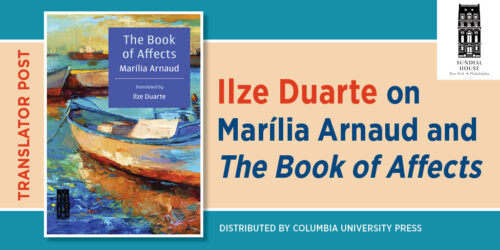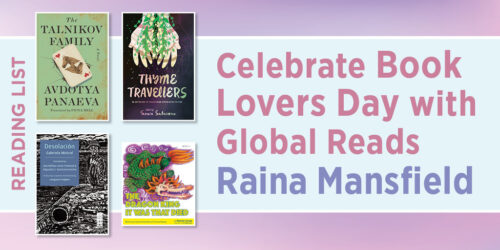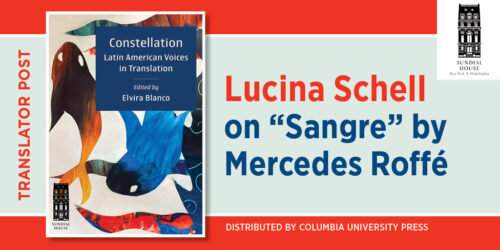Fiona Bell on The Talnikov Family

From Anna Karenina to The Brothers Karamazov, Russian literature of the nineteenth century is perhaps best known for the family novel. In 1848, as if anticipating the spate of profamily novels to come, Avdotya Panaeva penned a novel that was decidedly anti-. The Talnikov Family was suppressed by the censor for being “cynical” and “undermining of parental power,” but it circulated clandestinely among the Russian literati. In this short and feverishly narrated novel, Panaeva recounts her own violent upbringing in 1820s St. Petersburg with a critical eye toward gender and class violence.
Q: Who was Avdotya Panaeva?
Fiona Bell: Avdotya Panaeva (1820–1893) was born to theater actors in St. Petersburg and trained as a ballerina in her adolescence before she married the nobleman Ivan Panaev. Together with her husband and the poet Nikolai Nekrasov, she edited The Contemporary, a literary journal that published writers such as Turgenev, Dostoevsky, and Chernyshevsky. From a middle-class background and alienated by the Russian gentry culture that she entered upon her marriage, Panaeva contributed to a key moment in Russian literary history when writers of different class backgrounds began to be published, undermining the primacy of ruling-class authors like Turgenev or Tolstoy. In addition to promoting other writers, Panaeva wrote and coauthored her own novels under the penname Nikolai Stanitskii. At the end of her life, she published her memoirs, which constitute an important historical source for scholars of nineteenth-century Russian literature. Panaeva died in 1893, survived by her daughter, Evdokia Nagrodskaya, who would become an internationally best-selling writer.
Q: How does The Talnikov Family compare to other Russian novels from this period?
Bell: The first time I read The Talnikov Family, I realized that for all the works of Russian “realism” I had read, I still couldn’t tell you what people ate, what children wore, or what kind of pets families kept. By assuming a child’s perspective, Panaeva narrates the daily activities and intimate relationships that other works—even Leo Tolstoy’s Childhood, published in The Contemporary four years later—leave undescribed. And it’s no coincidence that the class-conscious Panaeva focuses on these details: it’s in daily life that class violence makes itself known.
In one memorable scene, the Talnikov children beg their servant, Luka, to tell the story of when he fought in the Russo-Turkish War. Several decades earlier, enserfed to a Russian nobleman, Luka was forced to fight in an imperial war; he recounts, in racist language, his former enserfer’s kidnapping of a local Jewish girl. As Luka tells this story, his current employer calls for tea, and Luka becomes flustered, torn between his employer’s call and the demands of her curious children. “Fussing about,” writes Panaeva, “the bewildered soldier carried, in place of his wounded comrade, a large tray into the drawing room.” In this one sentence, Panaeva captures the workings of serfdom, a system of bonded labor in which a man could be conscripted to an imperial war and then into domestic service in the imperial metropole. Panaeva narrates this scene through the eyes of an oblivious child but cannily gestures to the historical structures that determined Luka’s predicaments, past and present. Throughout The Talnikov Family, whether describing her parents, servants, teachers, governess, or others, Panaeva is fascinated by the slippery workings of class.
Q: Is The Talnikov Family a feminist novel?
Bell: Panaeva was certainly attuned to the constructedness of gender and the workings of patriarchy. In her later novels, she would develop a more cynical politics, jettisoning the possibility of solidarity with liberal men who claimed an interest in “the woman question.” But in The Talnikov Family, Panaeva is most interested in showing how adults construct and administer gender to children, often in absurd and violent ways. The young Natasha perceives her aunts’ toilette as a grotesque ritual; even when she prepares for her wedding at the end of the novel, she refuses to participate in anything similar. In another fascinating passage, Panaeva indicates how gender is constructed around color. Natasha and her older brother Misha are doubles, both because of their fiery temperaments and because they are both “swarthy.” Natasha suspects that her darker complexion is behind her maltreatment, which is worse than the other children’s and certainly worse than Misha’s. “Though my oldest brother was just as dark,” she writes, “he did not suffer from his swarthiness—on the contrary, it gave him some credibility, together with his strength and stubbornness.” Misha becomes a Byronic hero, a Russian man who will go on to fight in the Caucasus, whereas the somatically dark Natasha is figured as gender deviant, “a sexless being, neither a girl nor a boy, unloved by anyone.” In The Talnikov Family, gender is made through reference to Natasha’s body, behavior, and interactions with others. Ultimately, it’s one tool, among many, used against her by the violent adults in her life.
Q: What was the biggest challenge in translating The Talnikov Family?
Bell: The novel features quite a lot of direct speech—one of its best qualities, in my view. Panaeva endows each character with an idiosyncratic voice and stages dialogues that are fast-paced and often very funny. Grandma and Grandpa were especially difficult to translate: they both have a folksy voice, which required a lot of research on nineteenth-century idioms. Meanwhile, in Natasha’s mother, I tried to balance this folksiness with the verbal affectations of an aspiring society lady. Finally, the language of children was tricky: I wanted to capture their naïve directness without losing the historical distance. I read Charles Dickens and Charlotte Brontë to get a sense of children’s voices in Anglophone literature of the time.
Q: Why read The Talnikov Family today?
Bell: As the Russian state appeals to patriarchal “family values” to wage war on Ukraine, it’s important to read beyond the Russian canon. Novels like War and Peace or The Brothers Karamazov are often celebrated for their “universal” wisdom about love and family, but they also glorify the Russian nuclear family as a metonym for the Russian nation. By stepping away from the canon, we find writers with different political sensibilities, writers who directly thematize the class violence, patriarchy, and imperialism whose legacies we see today. In a century dominated by ruling-class writers, it’s a miracle that the formally uneducated Panaeva was able to write fiction and that her perspective has reached us today. The Talnikov Family illuminates a wider vision of “Russian literature” and a longer history of Russian patriarchy and its opponents.







